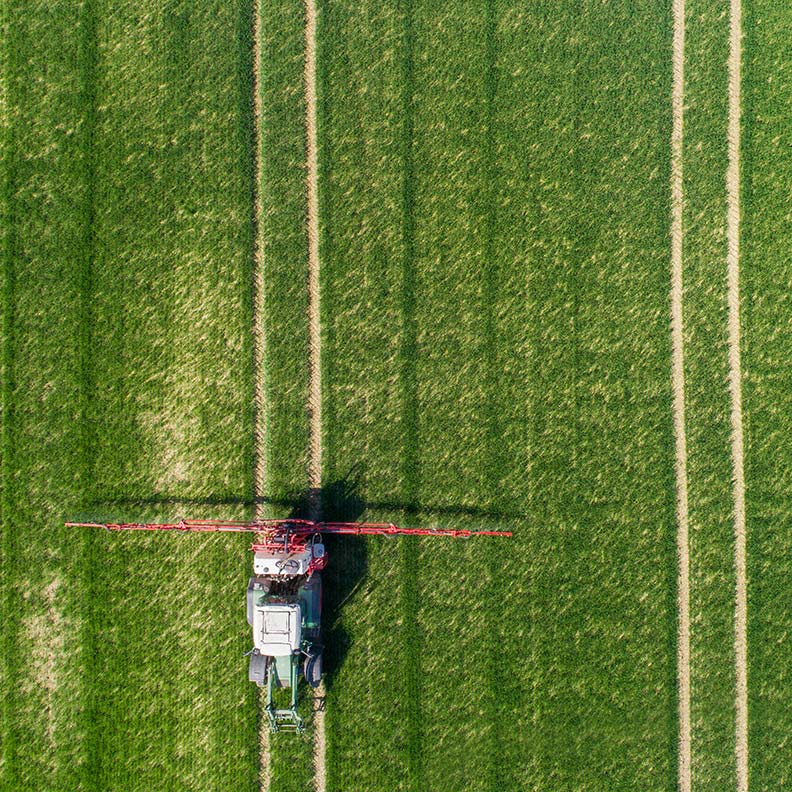COVID-19 is wreaking havoc nearly everywhere, but U.S. farmers are preparing to get back into spring planting tradition. Commodity markets have been drastically affected by both COVID-19 and OPEC oil production cuts, leaving traders and farmers to try and navigate daily volatilities. To farmer’s delight, field conditions have been improving throughout early spring. February and March were very dry in the Upper Midwest which helped provide relief to fields recovering from a wet fall. Farmers are on pace for a timely planting season, if weather doesn’t turn overly wet.
U.S. row crop
The 2020 planting season commenced and 3% of corn, 5% of spring wheat, 18% of sorghum, and 10% of sugar beets are already in the ground as of April 12, according to USDA. All crops are on pace with five-year historical averages as of early April.
Global demand for agricultural commodities has been severely affected by the COVID-19 outbreak. Shifts in consumer demands are being immediately felt within the supply chain. Restaurants who typically consume high amounts of cheese and fresh vegetables have significant sales losses or are closing all together. The lack of demand was instantly translated up the supply chain to dairy farmers who produce milk for the cheese production and veggie farmers harvesting for the fresh markets. Dairy coops are now strongly encouraging their farmers to cut production.
97 million acres of corn are to be planted in the U.S. this year, according to USDA, which is about 3% higher than market expectations and 8.0% more than in 2019. New crop corn prices fell 8% to $3.46 from March to mid-April, primarily due to cuts in ethanol production and expectations of a bumper crop. Farmers may still switch out of corn if planting gets delayed or prices change favoring soybeans. 83.5 million acres of soybeans are expected to be planted in 2020, up from 76.1 million acres in 2019.
Domestic fertilizer prices were relatively sideways throughout March and into April, according to DTN, but spot prices are starting to slowly increase for ammonia due to the increase in planned corn acres. There have yet to be any major input delivery delays due to COVID-19.
U.S. livestock and dairy
The U.S. livestock and dairy supply chains are strained due to COVID-19. The virus spurred shifts in consumer demands, often causing over supply. Dairy co-ops with over supply have been dumping milk and offsetting the loss by decreasing prices paid to farmers. Dairy co-ops often specialize in certain dairy products and the recent demand volatility lead to a glut in certain dairy supplies.
Livestock sale barns have been cutting back on the amount of sales due to social distancing. Although total sales are down, animal weights are up due to delays in selling. Delays are also felt further down the supply chain at processing facilities. In Sioux Falls, South Dakota, the Smithfield pork plant was temporarily closed due to a COVID-19 outbreak among employees. The plant is responsible for supplying upwards of 5% of all U.S. pork, according to Smithfield.
Ground-level insights from ag bankers
ROBERT HATTEN, NORTH CENTRAL NORTH DAKOTA
Farmers are optimistic going into planting, now that the 2019 crop is harvested and in the bins. 2019 corn yields harvested throughout winter were 60% to 70% of target for early maturing corn, but later maturing varieties have much higher moisture and low test weights. The decrease in oil prices put strain on ethanol plants who were starting to buy the lighter test weight corn, but ethanol production is slowing. COVID-19 has caused a few concerns directly on the farm for larger operations who rely on foreign workers and are unsure if their employees will be able to fly into the U.S., given current travel restrictions. Cattle prices also slipped due to supply chain issues from COVID-19.
SOUTH EAST NORTH DAKOTA
In our region and nationwide, margins were tight to begin with, but with a reduction in commodity prices, many farmers are forced to continue storing grain to see if the market can rebound. COVID-19 compounded the issues previously felt by the tariffs with China. Our beef producers in our region are facing issues with auction barns being open and not being able to sell their cattle. When some of these auctions have taken place, the cattle are selling at discount prices.
For planting, fields were extremely wet in the fall, but most farmers in our region were able to harvest nearly everything over winter. This February was the driest February since the 80’s and if we can continue to see a favorable forecast, and the frost continues to drop, there is a decent chance that we will see a normal planting year.
MATT JOHNSON, SOUTH WEST MINNESOTA
We had very favorable basis levels this winter, so more corn was sold in January and February than in typical years. Currently, field conditions are much better than the past two years and farmers are feeling optimistic about a normal planting season. We’re seeing packing plants slow down or even shut down as well as ethanol plants backing off which is affecting cattle feed rations due to limited availability of DDGS. Some livestock operations are changing feed rations to pre-DDGS days from 40 years ago.
Global ag
Brazil is expected to export a record 14.5 mmt (million metric tons) of soybeans in April 2020, eclipsing the previous monthly record by 2.1 mmt held in May 2018, according to the grain exporter group, ANEC. Large domestic supplies and a very cheap Brazilian Real are primary factors for the record exports. China’s purchases of Brazilian soybeans recently increased when Chinese crush facilities reopened post COVID-19 concerns. Brazil’s soybean harvest is nearly complete without any major issues.
U.S. soybeans are extremely expensive on the global market (over twice Brazilian prices), but corn is competitive and an increase in corn exports will support a rally in corn prices throughout the growing season.
What to watch for
The biggest concern throughout planting is still COVID-19 and its grip on future demand regarding prices. Now with over 2 million global cases and flattening curves, leaders around the world will start to consider reopening their regions. Farmers must be cautious and set price goals that reflect current markets yet seize sale opportunities when available.
Weather is the other major factor throughout planting season. If above average rainfall again delays planting in 2020, there could be a rally in both corn and soybeans. So far, U.S. planting is on an average pace, yet very early in the season.
Lastly, oil prices will be important to monitor with ties to ethanol production. The crash in oil prices turned ethanol producer margins negative across the Corn Belt and price basis significantly softened overnight.


